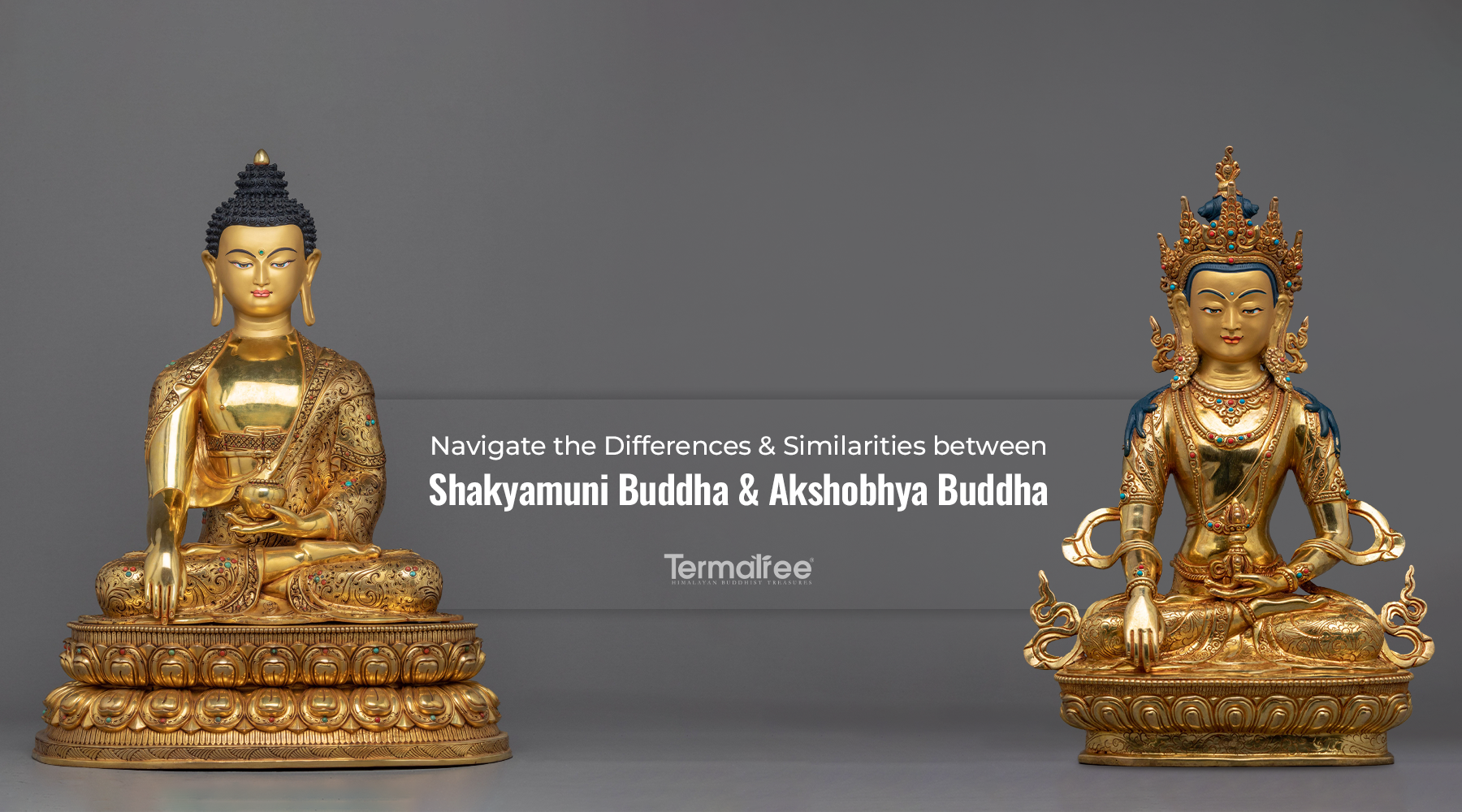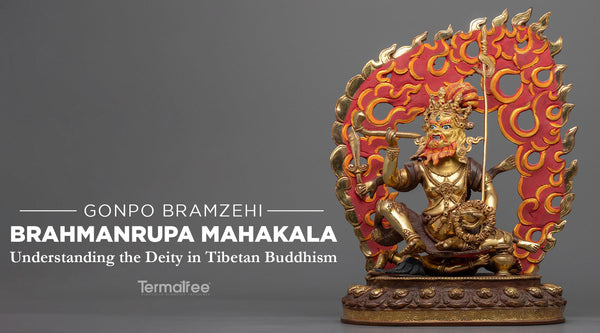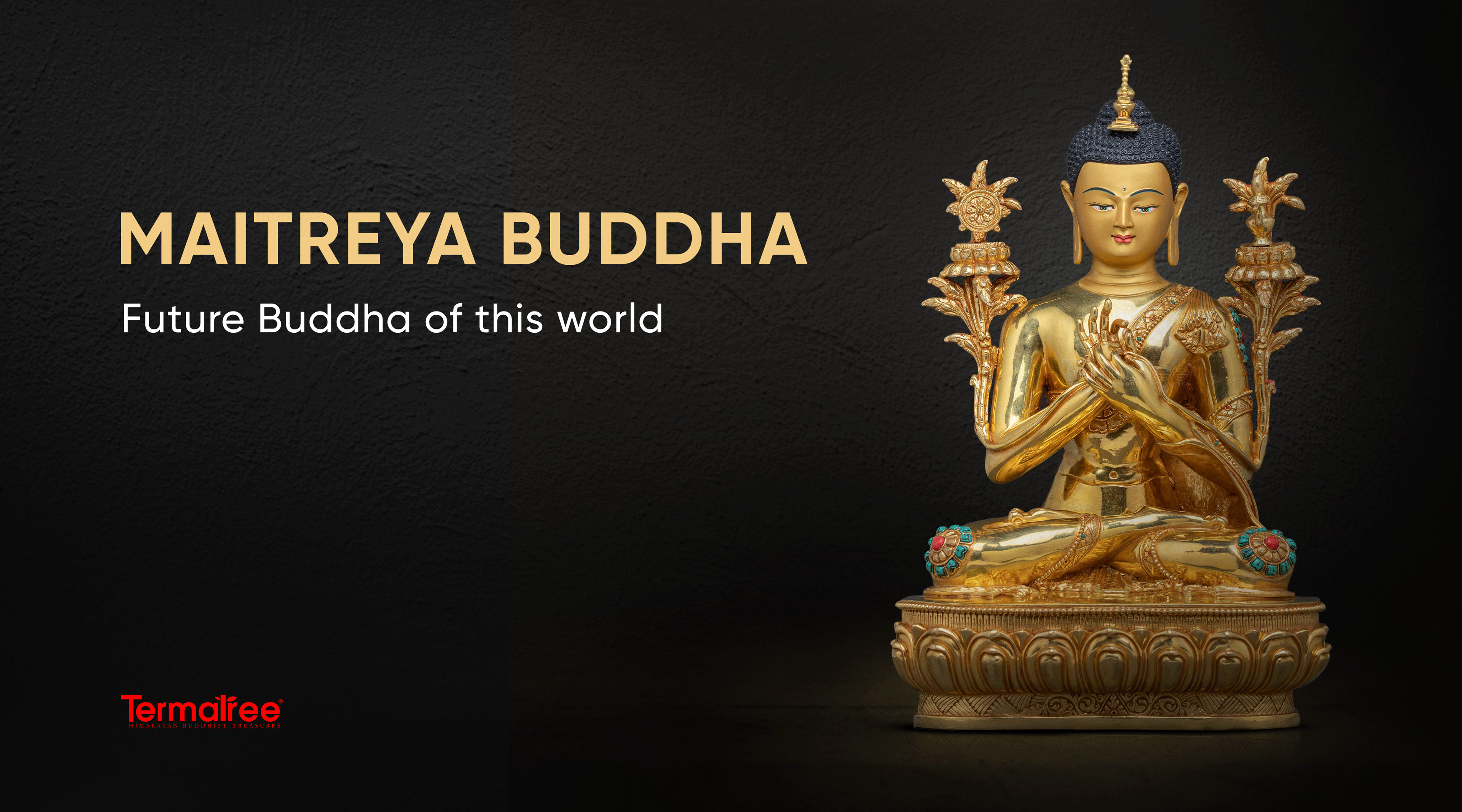It is easy to get lost in the world of Buddhist iconographies, especially if you aren't thoroughly versed in the subject matter. All figures of the Buddhist deities can look similar to one another at first look; however, the hand gestures, or 'mudra' to the different items associated with the particular deity, help immensely in the identification of the said deity. One must tread carefully when discerning the various subtleties of figure depiction of Buddhist deities and also understand the more profound implications of the elements featured as visual representations of enlightened beings convey profound symbolism and teachings. Nonetheless, it is only human to get confused regardless of the study. The subtle discrepancies between the Shakyamuni Buddha and Akshobhya Buddha figures seem to lead many people to confusion often.
At first sight, the figures of Shakyamuni Buddha and Akshobhya Buddha look deceivingly similar; therefore, it is necessary to pay close attention to the figure's details, like their hand gestures and the items they might be carrying or wearing, before discerning their identity. So let us delve deeper into the intricate details that differentiate these two enlightened beings, focusing on their symbolic objects of great significance in Buddhist art and philosophy.
Who is Shakyamuni Buddha?
Born Siddhartha Gautam in the 5th century BCE in a royal family of Lumbini (present-day Nepal), the founding figure of Buddhism who would later be known as Shakyamuni Buddha after attaining enlightenment. The name 'Shakyamuni Buddha' was attributed to him later in his life. 'Shakyamuni' stands for the sage of Shakyas, the clan Buddha was born in, and ‘Buddha’ stands for 'the awakened one,' 'the wise one,' closely related to 'Buddhi' (intellect, wisdom, etc.), a name given to anyone who attains enlightenment, or Nirvana.

Buy Authentic Himalayan Shakyamuni Buddha Statue
Before becoming the Shakyamuni Buddha, Siddhartha Gautam lived in the luxuries and privileges he was born into. However, despite the privileged life surrounding him, deeply troubled by the suffering he witnessed in the world, he would go on to leave all of it behind in search of 'truth.' Determined to seek the truth and find a way to alleviate human suffering, he renounced his princely status and embarked on a spiritual quest. After years of rigorous practice and meditation, he eventually attained enlightenment under the Bodhi tree in Bodh Gaya, India. Then after he became the Shakyamuni Buddha and started spreading his profound insights into the nature of reality, the causes of suffering, and the ultimate path to liberation that would lead to the eventual finding of Buddhism as a religion.
Who is Akshobhya Buddha?

Buy Gold Gilded Akshobhya Buddha Statue
Aksobhya is one of the Five Wisdom Buddhas or the Five Dhyani Buddhas, an aspect of the Adi Buddha. His name Akshobhya means "Immovable" or "Unshakable," reflecting his unwavering nature in the face of challenges. He resides within the eastern realm of the Diamond domain, assuming the esteemed position as the ruler of the Abhirati, also known as 'The Joyous' Pure Land. He is depicted with a blue-black complexion and possesses an assortment of symbolic possessions: a resounding bell, three intricately designed robes, a formidable staff, a radiant jewel, a delicate lotus, a sacred prayer wheel, and a gleaming sword. His consort Lochana and two elephants usually accompany him. It is worth noting that this divine figure manifests in various forms, exhibiting his eternal presence.
Key iconographic similarities between Shakyamuni and Akshobhya Buddha
Shakyamuni Buddha and Akshobhya Buddha both hold significant importance in the Buddhist practice. Both revered figures share a profound connection and exhibit several similarities in their teachings, attributes, and depictions. However, let us focus on the iconographic similarities between the two Buddhist figures.
- Mudras
Hand gestures, known as mudras, are an integral part of Buddhist iconographies; they are symbolic hand gestures based on significant finger patterns and postures to evoke a wanted state of mind or to communicate a specific idea. Mudras channel and direct the flow of 'prana,' or life force energy, in the body and enhance meditation and ritual practice. Iconographically, these mudras are used in Buddhist art to symbolize spiritual concepts. Every figure in the Buddhist pantheon is related to one or more mudras characteristic of their depictions and implies their particular divinity abilities or other ideas.
Similarly, Shakyamuni Buddha and Akshobhya Buddha share similar mudras, i.e., both Buddhas can be seen performing the ‘bhumisparsa mudra,’ or the earth-touching gesture. In this mudra, the right hand is placed with fingertips facing toward the earth, with the palm facing inwards, typically touching the lotus seat the Buddha sits upon. This mudra represents the moment the Buddha attained enlightenment claiming the earth as his witness. It is a significant mudra depicted on statues and images of the Buddha, invoking the earth goddess and standing for the triumph against evil. It inspires spiritual aspiration and determination.
- Poses and Posture
Like mudras, poses, and postures in Buddhist art and sculptures reflect more than the physical positioning of deities; they play a crucial role in expressing and disseminating philosophical and metaphysical ideas that Buddhist art and sculpture play a pivotal role in defining and communicating philosophical and metaphysical Buddhist ideas. The most common postures include the seated, standing, reclining, and walking Buddha.
Another similarity between the two Buddhas, Shakyamuni Buddha and Akhsobhya Buddha, is the manner of their positioning. Both the Buddhas are depicted in the seated position, with crossed legs with each foot placed on the opposite thigh, typically upon a moon disc representing the bodhicitta or compassion. The crossed legs posture is known as 'padmasana' and is associated with meditation and contemplation.
- Physical Attributes
A characteristic of the meditative posture, both the Buddhas are depicted with serene facial expressions and half-closed eyes, which can be fully closed in some depictions. They are also similarly displayed with elongated earlobes that help us identify Buddha. Physical attributes like the unisha and robes they drape are also similar but can vary in ornamentation and other details.
Key iconographic differences between Shkayamuni and Akshobhya Buddha
Given the iconographic similarities between the two Buddhas, it is no wonder that many people confuse the figures of the two Buddhas. However, significant differences can help us correctly identify Shakyamuni Buddha from Aksobhya Buddha and vice versa.
- Positioning of the Vajra
One of the leading discrepancies that lead to confusion between the Buddhas, the position of vajra, is an essential element that one must pay attention to in order to identify the Buddhas accurately. Vajras or rdo-rje (Tib.) is a five-pronged ritual item that is an essential part of the Vajrayana schools of Buddhism. It is the symbol of the school and means 'thunderbolt' and 'diamond,' implying the ability to cut through ignorance.

Image: Akshobhya Buddha carrying a vajra in his left hand.
Shakyamuni Buddha typically exhibits a vajra or has the vajra placed in front of his figure atop the lotus seat. The positioning of the vajra beside the figure of Shakyamuni Buddha embodies the very essence of Vajrasana, the sacred site in Bodhgaya, India, in contrast to Akshobhya Buddha, who instead carries the vajra in the palm of his left hand. The vajra stands upright on the face of his palms, which symbolizes the profound significance of the Vajra family within the realm of Tantric Buddhism.
-
Ornamentation

Image: Shakyamuni Buddha (Left) and Akshobhya Buddha (Right)
Within the context of the Tantric context, it is characteristic of Akbsobhya Buddha depictions to bedecked in splendid jewels. He can also be seen wearing an elaborately decorated headpiece or opulent crown that adds to his regal appearance. This, however, is very uncommon for the depictions of Shakyamuni Buddha. While Shakyamuni Buddha can be seen with such an opulent countenance sometimes, it is not an iconographic characteristic of his, whereas Aksobhya Buddha emerges characteristically with such ornamentation and opulence.
Thus, when discerning the depictions of these enlightened beings, one can look into the points mentioned earlier that will help with the identification. We hope this article could educate you on the differences and similarities shared between the Shakyamuni Buddha and Aksobhya Buddha depictions.





